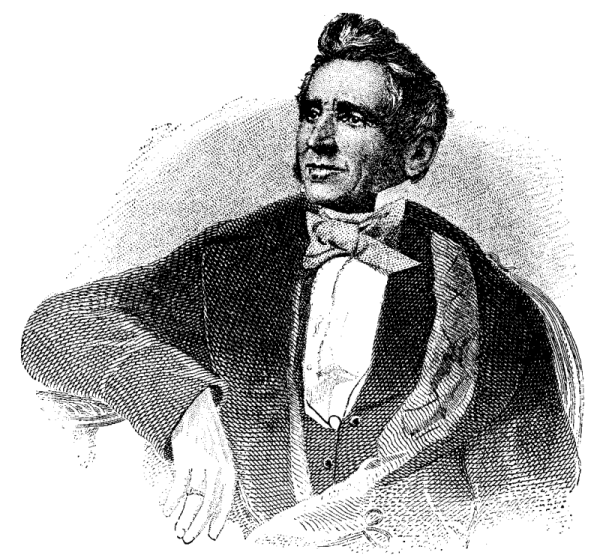
Charles Goodyear. Rubber Revolutionary
An inventor, an actor, an entrepreneur… It is a bit like a joke about “a bricklayer, a plasterer, an acrobat”, but in the case of Singer it is true. Besides, not all, because it was a colorful character in the full sense of the word.
CV: Charles Goodyear (1)
Date of Birth: December 18, 1800 (died July 1, 1860)
Citizenship: American
Family status: married, five children
Luck: difficult to assess and fickle, death in debt
Education: self-taught
An experience: entrepreneur working in many own and foreign companies
Interests: technique
He came from a family with rich traditions. His ancestor was Stephen Goodyear, an immigrant from London, one of the founders in 1638 of the early British colony of New Haven. In 1814, at the age of fourteen, Charles Goodyear (b.1) left home. He worked hard, traded in agricultural machinery and even made a fortune. Unfortunately, the deteriorating economic situation led him to problems and debts, as a result of which he ended up in prison.
He had the soul and character of an inventor. In order to have some money for his experiments, he sold the rights to the forks patented by his father. He became interested in rubber, which was then "discovered" by the dynamically developing technical civilization of the West. However, despite numerous attempts, no one has been able to control the properties of this material at various temperatures.
In 1834, Goodyear arrived at the Roxbury India Rubber Co. in New York, which was the first in America to sell rubber products. He presented the owner with a new idea - rubber valve. Unfortunately Roxbury India Rubber Co. she was not enthusiastic about the invention. In fact, she was desperately fighting for survival. Heaps of their rubber products, which worked well in winter, melted in summer at higher temperatures, turning into a sticky, smelly mass. Angry customers returned this rubbish to the store, demanding, of course, a refund. Factory managers had to bury the stinking remains of the production, in which they invested 20 thousand. dollars.
The fashion for rubber products in the 30s passed as quickly as it appeared. Initially, everyone wanted an innovative waterproof thing made from raw materials brought from Brazil. However, customers are quickly fed up with products that turn to stone in winter and melt in summer. None of the rubber companies lasted more than five years. Investors have lost a lot.
That's when Goodyear came up with the idea to dry naturally sticky chewing gum with magnesium powder. It seemed like a good idea, but... unfortunately, only until the summer, when the rubber soles in the shoes sold invariably started to melt. However, failure did not discourage him. He began adding two drying ingredients to foods: magnesium powder and slaked lime. Rubber became more resistant and the inventor celebrated his first success - he was awarded a medal at an exhibition in New York.
Sulfur in the boiler
In 1838, Charles met a man named Nathaniel Hayward who was experimenting by mixing chewing gum with sulfur. Our "idol" moved to the city of Woburn, Massachusetts, where Hayward had a production. Goodyear and his family occupied a small outbuilding. Their financial situation was poor. Clarisse's wife insisted that her husband stop chasing his fantasies and go to some "specific job."
2. Photograph of the discovery of rubber vulcanization.
One day in 1839, Goodyear started another experiment. In the cauldron, he mixed sulfur, soot and added pieces of hot rubber. He began to slowly grind everything so that the ingredients blended into each other. Legend has it that when he heard his wife, he quickly put the cauldron into the furnace. According to another version, the mixture just got him there. Several hours passed. Charles took out the cauldron and set it to cool. A quarter of an hour later, I was surprised to find that the rubber had changed its properties after being in the oven (2). He did not yet know that he had discovered what he had been looking for for five years - it turned out that by fusing rubber with sulfur, one can obtain a substance that is resistant to temperatures above 100 ° C and elastic below -15 ° C. In honor of the Roman god Vulcan, the process he discovered for the production of improved rubber was named after him. curing.
Today, we describe the vulcanization of traditional types of elastomers known as rubbers as a process based on the addition of sulfur to carbon-carbon double bonds present in both natural and synthetic rubbers. As a result of this reaction, chemical bonds are formed CSx-C, where x = 1-3. The American inventor could not describe it that way, but he knew that he had found what he had been looking for for a long time.
It will be almost five years before he thoroughly understands and develops the entire vulcanization process. In 1843 he patented his inventions - vulcanization system Oraz rubber production technologywhich assured him dominance in the rubber industry. He also founded a company L. Candy Co.which was engaged in the production of products from this material, mainly galoshes (3). Goodyear's vulcanization method did not solve all the problems, but the resulting raw material was so strong that it could be used to make tires for cars, bicycles and cars.
3. Advertising rubber shoes L. Candee.
Years later Charles was behind him over a thousand rubber inventionsincluding rubber inkwells, pumps, dolls, gas cans, sofa airbags, fan fenders, wheelbarrow wheels, bellows, horse harness, faux leather, and other marvels. In the 50s, at an exhibition in London, and then in Paris, he built the whole pavilion in rubber from floors to roofs. Its rubber rooms were filled with rubber buttons, rubber boats, rubber pendants, rubber fans, portraits painted on rubber plates, and rubber ornaments. Unfortunately, due to the temporary suspension of his French patent, he was unable to pay the bills. That's why he was put back in jail. There he received Cross of the Legion of Honorawarded by Napoleon III.
Unfortunately, in those days, most of the production was illegal, and few people cared about patent rights. To combat piracy, Goodyear hired an attorney, Secretary of State Daniel Webster, to protect their inventions. Sam was too slow to fill out international patent applications, and when he developed the vulcanization system in 1843, it turned out that the English inventor Thomas Hancock had applied a few weeks earlier.
Today, Hancock is credited in some sources as an independent co-inventor of vulcanization. British patent retained. In court, unfortunately, Charles lost out to the testimony of English chemists, who argued that Goodyear's achievements could not be proven beyond doubt.
Let others reap their harvest
Shortly after Goodyear's invention, in 1845, Richard Thompson first patented the design of tires filled with horsehair for wagons. This project did not receive recognition, but in 1888 the topic was raised again. John Dunlopwho proposed an air-inflated tire for bicycles. The invention broke through, further implementations went quickly, and in 1895 Michelin brothers they used pneumatic tires on a Daimler car.
4. Goodyear tires
It was not long before the chemistry of the rubber industry developed significantly. This phenomenon was facilitated by disruptions in the supply of natural rubber, especially caused by the First and Second World Wars. To survive, the gun industry had to offer alternative materials. That's how they appeared first synthetic rubbers, in particular German SBR rubber (a styrene-butadiene copolymer still used as a base material in car tires). The discovery of different types of rubber compounds has paved the way for special applications requiring different rubber properties, including the ability to operate at low temperatures, as is the case with winter tires.
Invented around 1915 carbon black hardening technique. The improver is called filler and makes up 20-30% of the rubber compound. In the 90s, carbon black was successfully replaced by silica. It turned out that with the same stability of the mixture, it is possible to improve grip on wet roads and reduce rolling resistance. This is due to the stronger bond of rubber with silica. These properties have been exploited with interest in winter tire technology.
Charles Goodyear died in 1860 - instead of the state of his debts. Fortunately, his son Charles Jr. opened a shoe factory that provided for the family. In 1898, nearly forty years after Charles' death, the concern founded by Frank Seiberling was named Goodyear Tire & Rubber Company (4), but the heirs of the inventor had none of this.
Goodyear was philosophical about the fortune he first gained and then lost. “Life cannot be judged solely by the standards set by dollars and cents. I have no right to complain about what I sow and others reap. A person has the right to complain only when he sees that there will be no harvest at all, ”he once said. Perhaps when he ended up in jail for debt.

